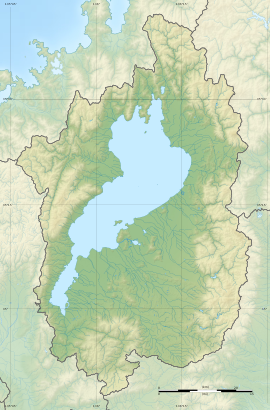| 廃少菩提寺 | |
  | |
| Location | Konan, Shiga, Japan |
|---|---|
| Region | Kansai region |
| Coordinates | 35°01′37″N 136°03′21″E / 35.02694°N 136.05583°E / 35.02694; 136.05583 |
| Type | temple ruins |
| Site notes | |
| Public access | Yes (no public facilities) |
| National Historic Site of Japan | |
The Shōbodai-ji ruins (廃少菩提寺, Haishōbodai-ji) is an archaeological site with the ruins of a Buddhist temple located in the city of Konan, Shiga Prefecture, in the Kansai region of Japan. The ruins were designated a National Historic Site of Japan in 1926, with the area under protection expanded in 1928.
Overview
Shōbodai-ji was founded in 731AD by the priest Ryōben at the request of Emperor Shōmu. The temple was a subsidiary of Kofuku-ji in Nara. Little is known of the temple's history, but per surviving documents, in 1492 the temple was very large, with a Kondō, Pagoda, Lecture Hall, Belfry, Kuri and 37 chapels. In 1570, the temple was completely destroyed by the soldiers of the Rokkaku clan after their defeat by Oda Nobunaga. It was never rebuilt.
All that survives of the temple today is a large Kamakura period Tahōtō stone pagoda, with an inscription giving the date of 1241. This monument is 448 cm in height.
In addition, the ruins of the temple include three stone images of Jizō Bosatsu, the largest of which is 158 cm tall. Jizō is depicted as standing, with a staff in one hand, and with a boat-shaped halo. Also protected within the National Historic Site design a 160-cm carving of Emma surrounded by five images of Buddhas.
The site is about 15 minutes by car from Kōsei Station on the JR West Kusatsu Line.
See also
References
- "廃少菩提寺石多宝塔および石仏" [Haishōbodaij iseki tahōtō oyobi sekibutsu] (in Japanese). Agency for Cultural Affairs. Retrieved August 20, 2020.
- ^ Isomura, Yukio; Sakai, Hideya (2012). (国指定史跡事典) National Historic Site Encyclopedia. 学生社. ISBN 4311750404.(in Japanese)
External links
- Konan Tourism Association (in Japanese)